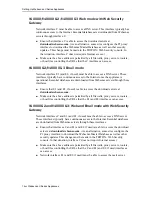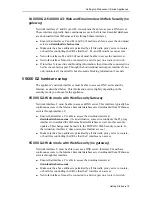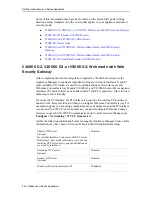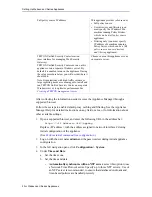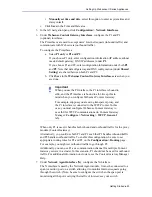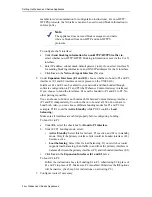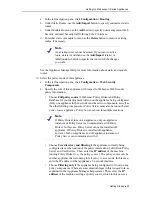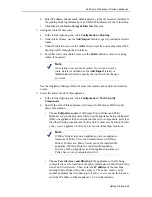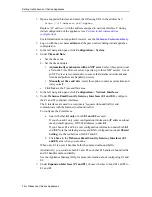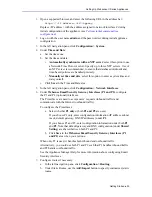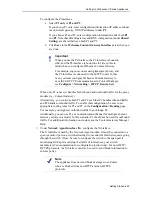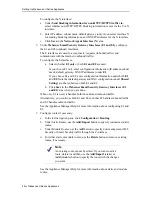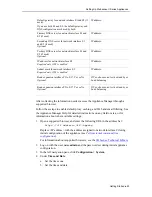
Setting Up Websense V-Series Appliances
28
Websense V-Series Appliances
Follow these steps to enable default filtering. See the Appliance Manager Help for
detailed instructions on any field or area, or for information about other available
settings.
1.
Open a supported browser, and enter the following URL in the address bar:
https://<IP address>:9447/appmng
Replace <IP address> with the address assigned to network interface C during
initial configuration of the appliance.
(See
Perform initial command-line configuration
.)
2.
Log on with the user name
admin
and the password set during initial appliance
configuration.
3.
In the left navigation pane, click
Configuration > System
.
4.
Under
Time and Date
:
a.
Set the time zone.
b.
Set the time and date:
•
Automatically synchronize with an NTP server
: select this option to use
a Network Time Protocol server. Specify up to three NTP servers. Use of
an NTP server is recommended, to ensure that database downloads and
time-based policies are handled precisely.
•
Manually set time and date
: select this option to enter a system time and
date yourself.
c.
Click
Save
in the Time and Date area.
5.
In the left navigation pane, click
Configuration > Network Interfaces
.
6.
Under
Network Agent Interface (N)
, configure the N interface.
The N interface is used by the Websense Network Agent module. It must be
connected to a span (or mirror) port on a switch allowing it to monitor Internet
requests going through the switch. (Note: be sure to configure the switch so the
span port is monitoring all the ports carrying the traffic of interest; see your switch
manufacturer’s documentation for configuration instructions).
In Standalone mode (no third-party integration), Network Agent can send block
information to enforce policy for HTTP and HTTPs protocols, as well as non-
HTTP/HTTPS protocols. If a third-party tool such as ISA Server is used for
HTTP/HTTPs traffic, then the N interface can be used to send block information
only for non-HTTP/HTTPS protocols.
To configure the N interface:
a.
Under
Send blocking information via
, select whether Network Agent’s
blocking information is sent via the C or N interface.
Note
The appliance does not send block messages to end users
who are blocked from non-HTTP and non-HTTPS
protocols.

